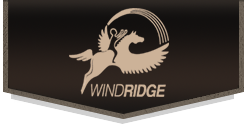Project Description
Therapy Program
Our Therapy Program
Windridge and Kidz First Therapy collaborate to provide hippotherapy as a part of a comprehensive physical therapy treatment for children with a wide variety of diagnoses. “Hippo” is Greek for horse, thus the word hippotherapy is loosely translated as “therapy with the help of the horse”. This means the horse’s movement can be used as a therapy tool by physical, occupational, and speech-language pathologists to help clients work toward therapy goals in a fun, active, and motivating environment.
Therapists employed with Kidz First Therapy have completed specialty training in hippotherapy and are supervised by Celia Bower, PT, HPCS, certified by the AHCB. They are supported in treatments by Windridge’s PATH, Int’l certified instructors. The horses used in hippotherapy are extensively trained and selected specifically for use in hippotherapy, as well as for the needs of each child. Potential clients receive a physical therapy evaluation for medical eligibility and safety for participation in therapy that specifically incorporates hippotherapy. In addition to the PT evaluation, a physician’s release and order for physical therapy is required.
In PT that incorporates hippotherapy, the unique movement of the horse is used as one of many treatment tools that therapists may use as they progress a patient towards therapy goals. The repetitive multidimensional natural movement influences multiple body systems (ex: neurological, muscular, cardiovascular, sensory, respiratory, emotional, visual, etc.) at the same time. This unique movement makes hippotherapy a powerful and effective tool that can be individualized for each client in many ways by a knowledgeable and trained therapist. Equestrian (riding) skills are NOT a goal of hippotherapy.
Repetition is a major component of learning and strengthening. It has been proven that an average horse takes approximately 3,000 steps in 30 minutes. This means a child can potentially receive 3,000 repetitions of natural adjustable movement and associated active responses for balance, stability, coordination, strengthening, etc. that cannot be duplicated in any other traditional therapy setting. Additionally, equipment, positions, and activities selected by the therapists help optimize the effects of the movement specifically for each client’s needs. As in other therapy settings, these components can be adjusted as they progress towards functional therapy goals. We regularly see incredible gains that carryover into daily life, which is the reason we love what we do!
